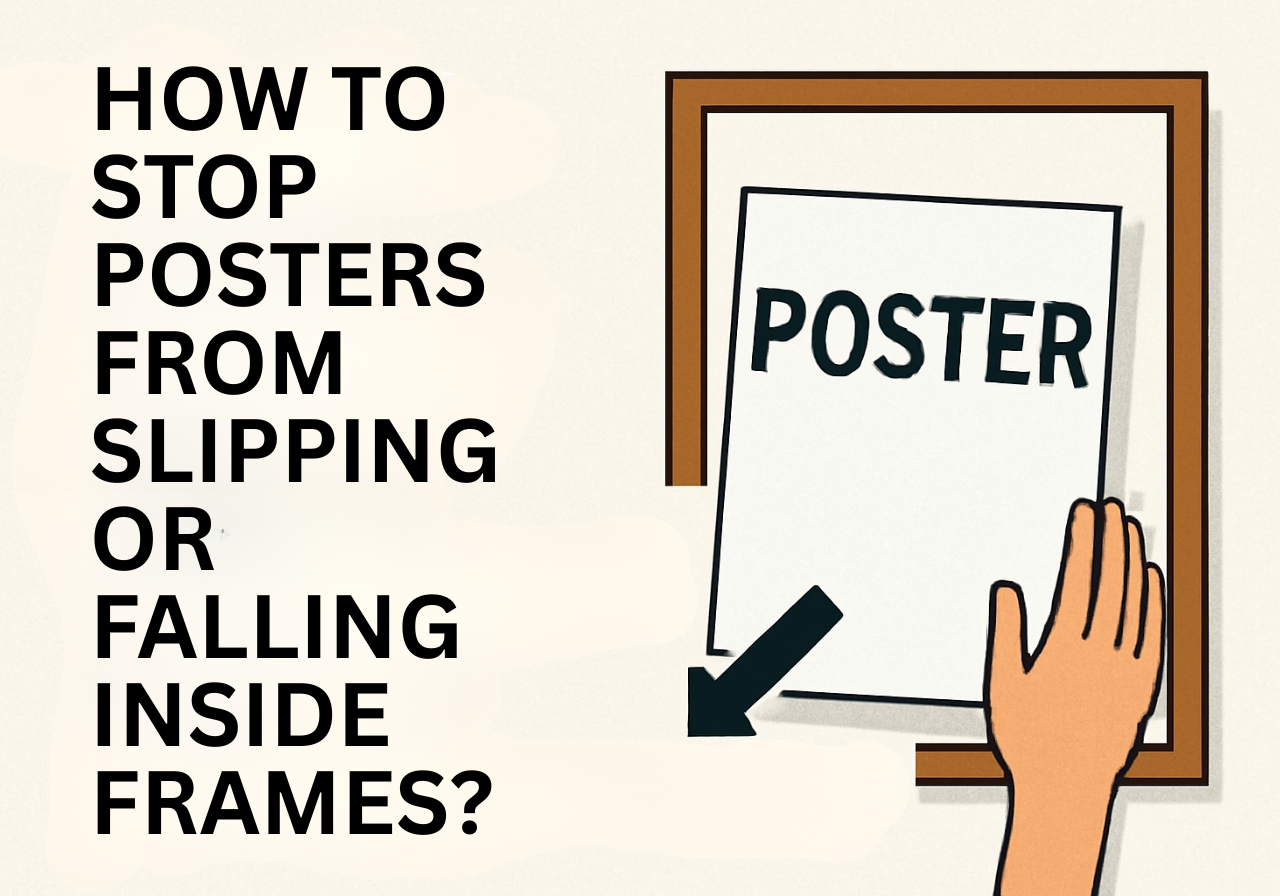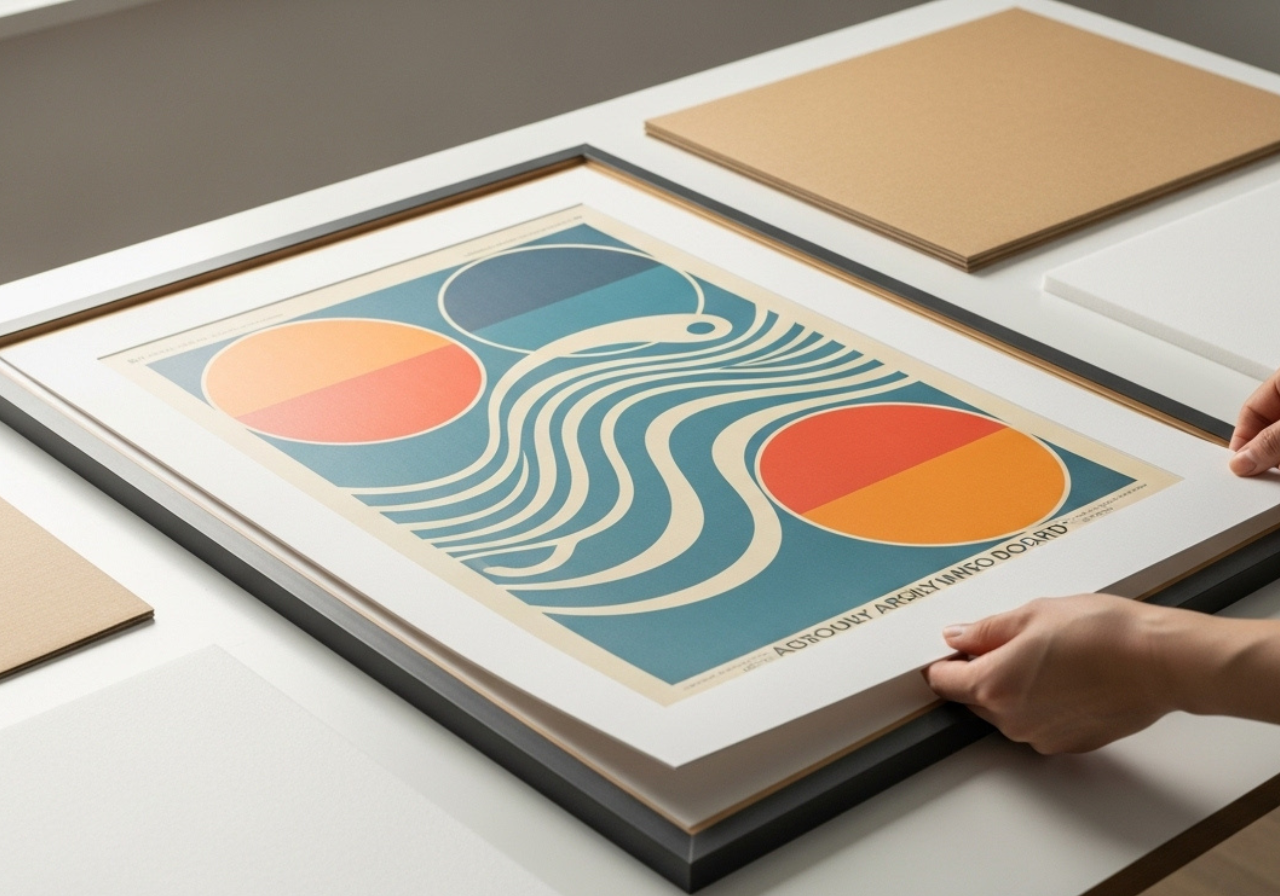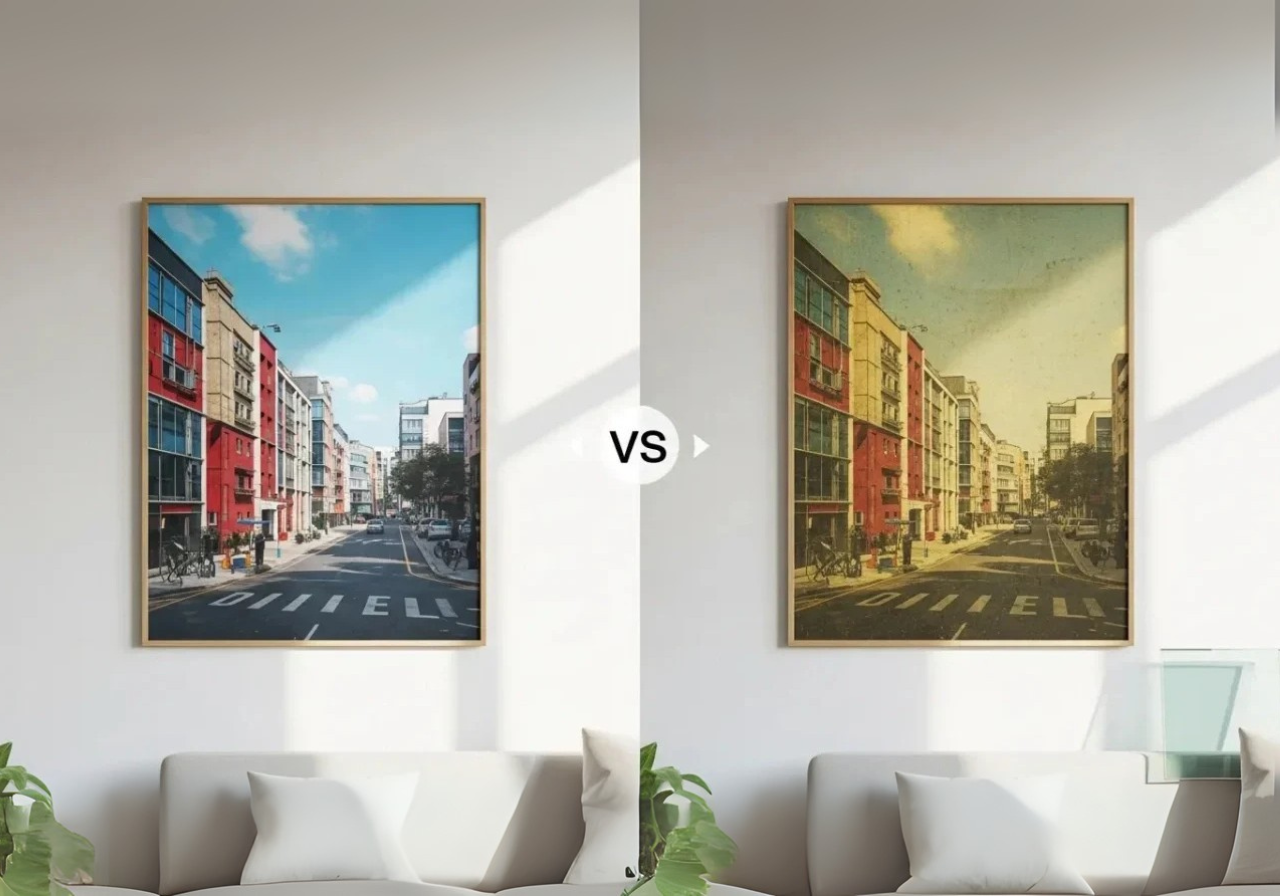Framing a poster is an easy way to make it look finished and professional. But many people run into the same problem: the poster slips down inside the frame, wrinkles or shifts to one side. This not only ruins the look but can also damage the poster over time. The good news is that the issue is easy to solve with the right techniques. By focusing on fit, support and stability, you can keep your poster flat and secure for years.
Match the Poster and Frame Size
A poor fit is the most common reason posters slide inside frames. If the frame is even slightly bigger than the poster, gravity will pull the paper down and leave a gap at the top. That gap quickly makes the poster look crooked.
Before buying a frame, measure your poster with a ruler or measuring tape. Write down the height and width in inches or centimeters. When you shop for frames, match those numbers exactly. If you can’t find a perfect match, consider ordering a custom frame or using a mat to fill the extra space.
For example, if your poster is 18 x 24 inches and your frame is 20 x 26 inches, the poster will never stay centered on its own. A mat or backing board is necessary to close the extra space and hold it tight.
Strengthen the Backing Board
Many affordable frames come with thin cardboard or fiberboard backings. These materials bend, warp or loosen over time, especially if the frame hangs on a wall exposed to humidity or sunlight. A weak backing means your poster has no firm surface to rest against, which makes slipping more likely.
Replacing the factory backing with a sturdier option solves this problem. Foam board is lightweight, rigid and available at most craft or office supply stores. Mat board is another option, especially if you want an archival, acid-free material that won’t damage your poster. Cut the backing to the exact size of the frame so it presses evenly across the entire surface of the poster. A solid backing gives your poster structure and prevents sagging.
Secure the Poster to the Backing
Even with the right backing, a poster can still slide if nothing holds it in place. Securing the poster to the backing board is the next step and you have several safe methods to choose from:
-
Double-sided mounting tape: Place small strips at each corner and along the edges. The tape sticks the poster directly to the backing. Use this method for everyday posters where preservation isn’t a concern.
-
Photo corners: These small clear or paper pockets stick to the backing board. You slide the corners of your poster into them. This method keeps adhesives away from the artwork itself, making it safer for posters you want to protect.
-
Archival hinges: If the poster is valuable, vintage or collectible, use acid-free archival hinges. These lightweight strips secure the poster but are reversible, so they won’t damage the paper over time.
No matter which method you use, avoid regular tape or glue. They can yellow, dry out or tear the poster when removed.
Use Matting for Added Pressure
A mat isn’t just decorative. It also serves a practical purpose by pressing against the edges of the poster and holding it flat. If your frame is larger than your poster, a mat is the cleanest way to fill the extra space.
For example, if your poster is 11 x 17 inches and your frame is 16 x 20, a custom-cut mat will create an even border around the poster. The mat keeps the poster centered, prevents it from sliding around and improves the overall presentation.
Choose acid-free mats if you’re framing a valuable piece, since regular cardboard mats can cause discoloration over time. A mat also prevents direct contact between the poster and the glass, reducing the risk of condensation or sticking.
Consider Clips or Poster Hangers
If you want a more casual display or prefer not to use adhesives, poster clips or hangers are a smart alternative. Poster clips grip the edges, while magnetic hangers hold the top and bottom of the poster. Both options keep the paper stretched and secure.
This method works best for posters you swap out often, such as seasonal prints or decorative art in a living space. It doesn’t require a traditional frame but it eliminates the problem of slipping entirely. The poster stays flat and taut and you avoid issues like backing boards or adhesives.
Check the Frame Position
Even a well-secured poster can slip if the frame itself hangs unevenly. A frame that tilts forward or leans against a wall puts extra pressure on the glass, which can cause the poster to shift.
To prevent this, use proper wall anchors or picture-hanging hardware for heavier frames. If the frame sits on a shelf or desk, make sure it rests flat against the surface and doesn’t lean at an angle. A stable frame ensures the poster remains pressed evenly against the glass and backing.
Keep the Glass Clean and Tight
The glass or acrylic in a frame plays a bigger role than most people realize. If the glass is loose, the poster has room to shift. Before placing your poster inside, check that the glass fits tightly into the frame. If it rattles, add spacers or felt pads around the edges to eliminate movement.
Cleaning the glass is also important. Dust or debris can create tiny gaps that keep the glass from pressing evenly against the poster. Wipe it with a lint-free cloth before assembly. A snug, clean fit between the poster, glass and backing adds another layer of security.
Final Thoughts
A slipping poster doesn’t mean you need a new frame — it just means the setup needs adjusting. By choosing the right frame size, reinforcing the backing and using safe methods to secure the poster, you can stop shifting for good. Adding a mat improves both stability and appearance, while stable hanging keeps everything in place. When done right, your framed poster will stay flat, centered and professional-looking for years.







